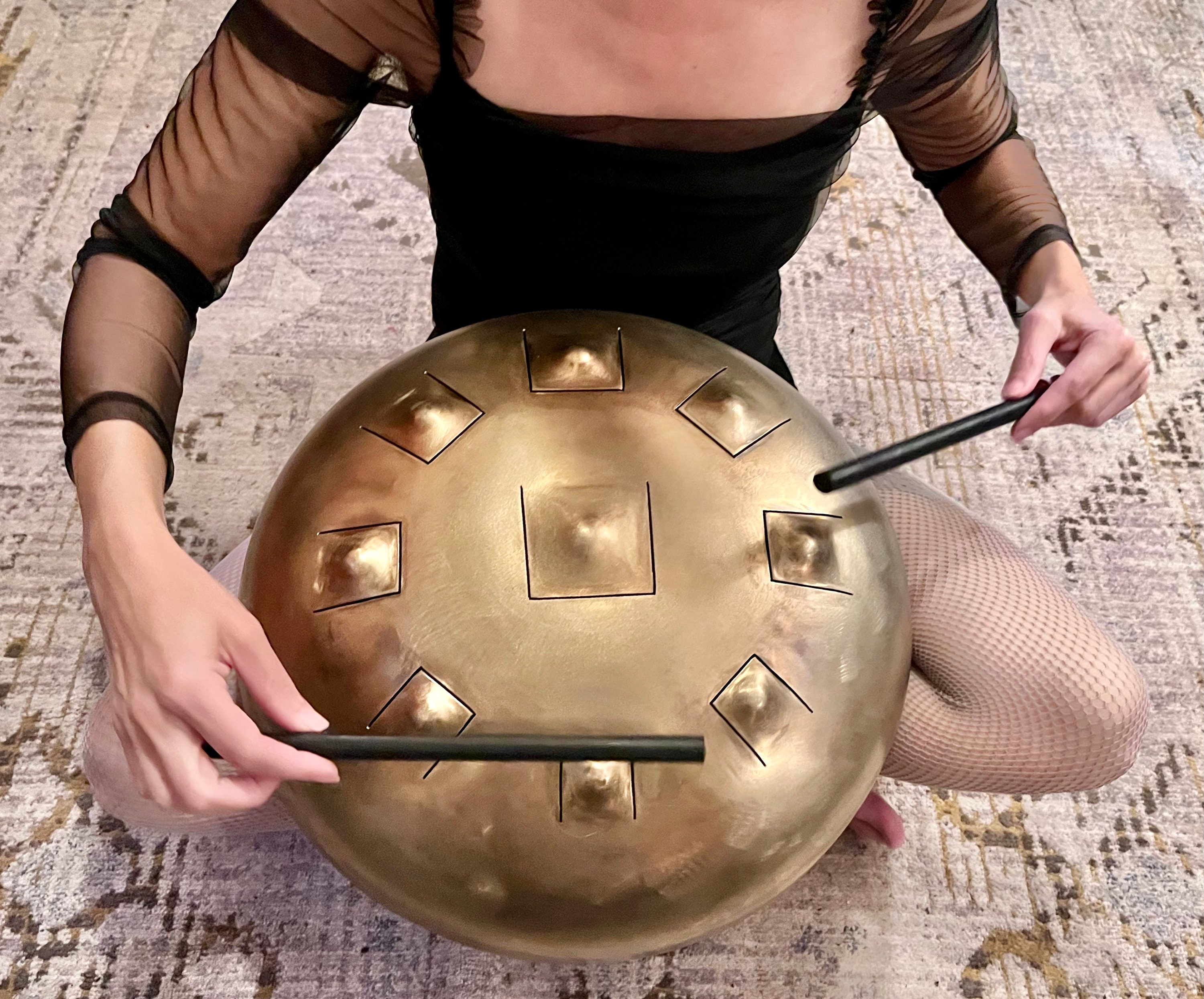Handpan players wave their hand rapidly over the tonefield to create vibrational resonance, produce harmonics, and add texture and complexity to their playing. This technique can enhance the overall sound of the handpan and create unique and memorable musical compositions.
Vibrational resonance
One reason why some handpan players wave their hands rapidly over the tonefield is to create vibrational resonance. When a handpan is played, the vibrations from the instrument travel through the air and into the player’s body.

By waving their hands over the tonefield, a player can create additional vibrations that can be felt throughout their body. This can create a sense of connection between the player and the instrument, and it can also enhance the overall sound of the handpan.
Creating Harmonics
Another reason why some handpan players wave their hands rapidly over the tonefield is to create harmonics. Harmonics are a series of overtones that are produced when a sound wave vibrates at a frequency that is a multiple of the original frequency.
By waving their hands over the tonefield, a player can produce a range of harmonics that can add depth and complexity to their playing. This technique is often used in more advanced handpan playing, and it requires a great deal of skill and practice to master.
Adding texture and complexity
Finally, some handpan players wave their hands rapidly over the tonefield to add texture and complexity to their playing. By varying the speed and intensity of their hand movements, a player can create a range of unique sounds that can add depth and interest to their playing. This technique is often used in improvisational playing, and it requires a great deal of creativity and spontaneity.
Who is the most followed Handpan player ever?
It is difficult to determine who the most followed handpan player is, as social media platforms have varying metrics for measuring followers. However, some of the most well-known and influential handpan players include Dante Bucci, David Kuckhermann, and Daniel Waples.

These players have each contributed to the development and popularization of the handpan, and their music has inspired countless others to take up the instrument.
What are the criteria for determining the quality of a handpan?
There are several factors to consider when evaluating the quality of a handpan. These include the tone, sustain, and overall craftsmanship of the instrument. A good handpan should have a balanced tone with clear and resonant notes that sustain for a reasonable amount of time.
Additionally, the handpan should be well-made, with smooth and consistent hammer marks and a stable tuning. It is also important to consider the reputation of the maker, as established makers with a track record of producing high-quality handpans are more likely to produce a good instrument.
Do handpans go out of tune?
Like all musical instruments, handpans can go out of tune over time. This can be caused by a range of factors, including changes in temperature and humidity, excessive playing, and improper handling or storage. However, with proper care and maintenance, handpans can retain their tuning for many years.

It is recommended that handpan players store their instruments in a protective case, avoid exposing them to extreme temperatures or humidity, and have them tuned regularly by a professional handpan tuner.
Is the handpan a healing instrument?
Many people believe that the handpan has healing properties and can promote relaxation, reduce stress and anxiety, and improve overall well-being. The calming and meditative qualities of the handpan’s sound are often cited as the reason for its therapeutic benefits.
Some handpan players also incorporate elements of sound healing into their playing, using the instrument to promote physical, emotional, and spiritual healing. While scientific research on the healing properties of the handpan is limited, many people have reported positive experiences with the instrument as a tool for relaxation and meditation.
FAQs
Do all handpan players use this technique?
No, not all handpan players use this technique. It is often used by more advanced players who are looking to add depth and complexity to their playing.
Is this technique difficult to learn?
Yes, this technique requires a great deal of skill and practice to master. It is often used by more experienced handpan players who have developed a deep understanding of the instrument.
Can this technique be used in any style of music?
Yes, this technique can be used in a range of musical styles, including world music, jazz, and classical.
Conclusion
In conclusion, the handpan is a beautiful and unique musical instrument that offers a range of interesting and complex sounds. The technique of waving one’s hands rapidly over the tonefield is just one of the many ways that handpan players can add depth and interest to their playing.
Whether you are a beginner or an experienced handpan player, this technique can be a valuable tool for creating unique and memorable musical compositions. With practice and dedication, anyone can learn to use this technique effectively and create beautiful music with the handpan.


